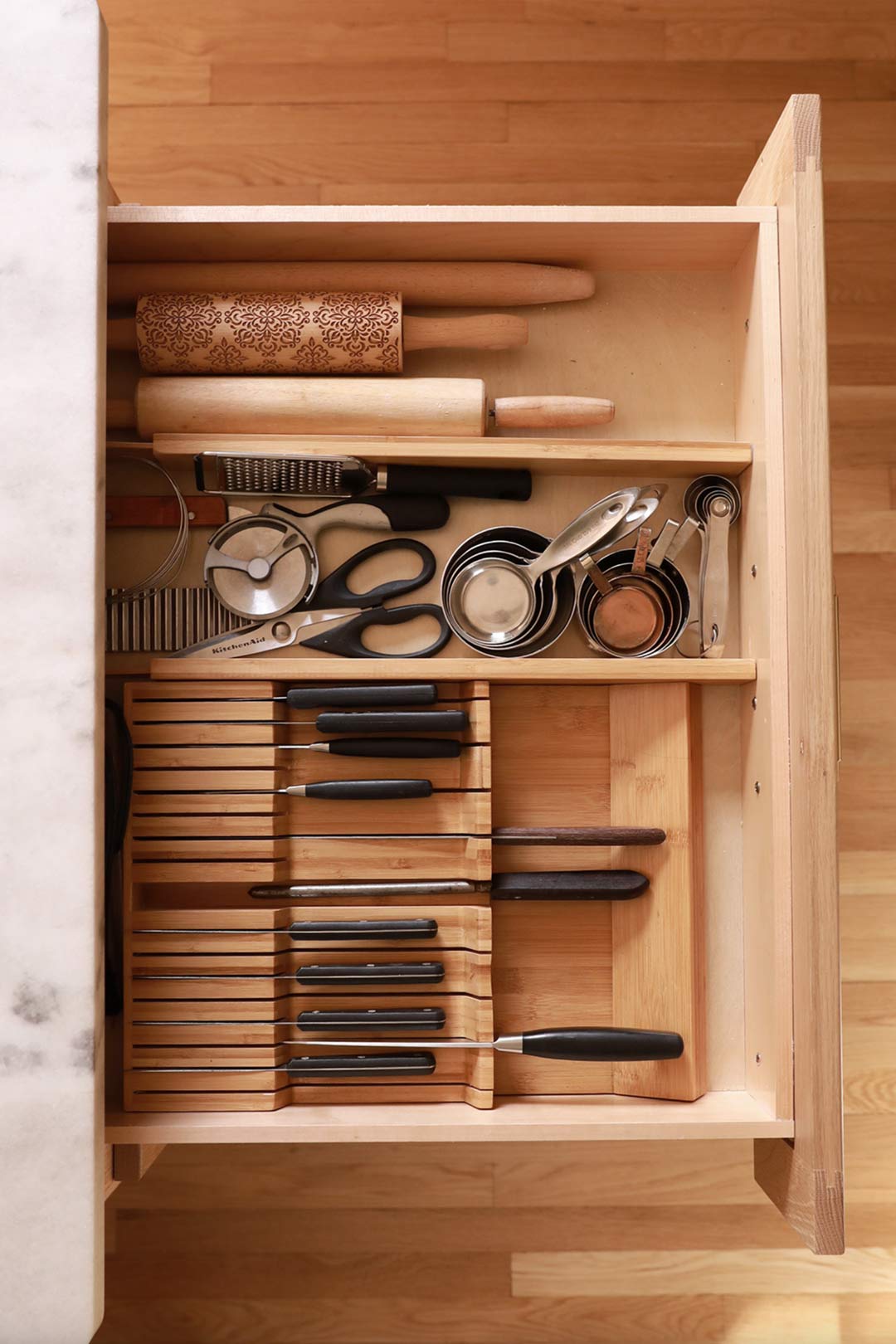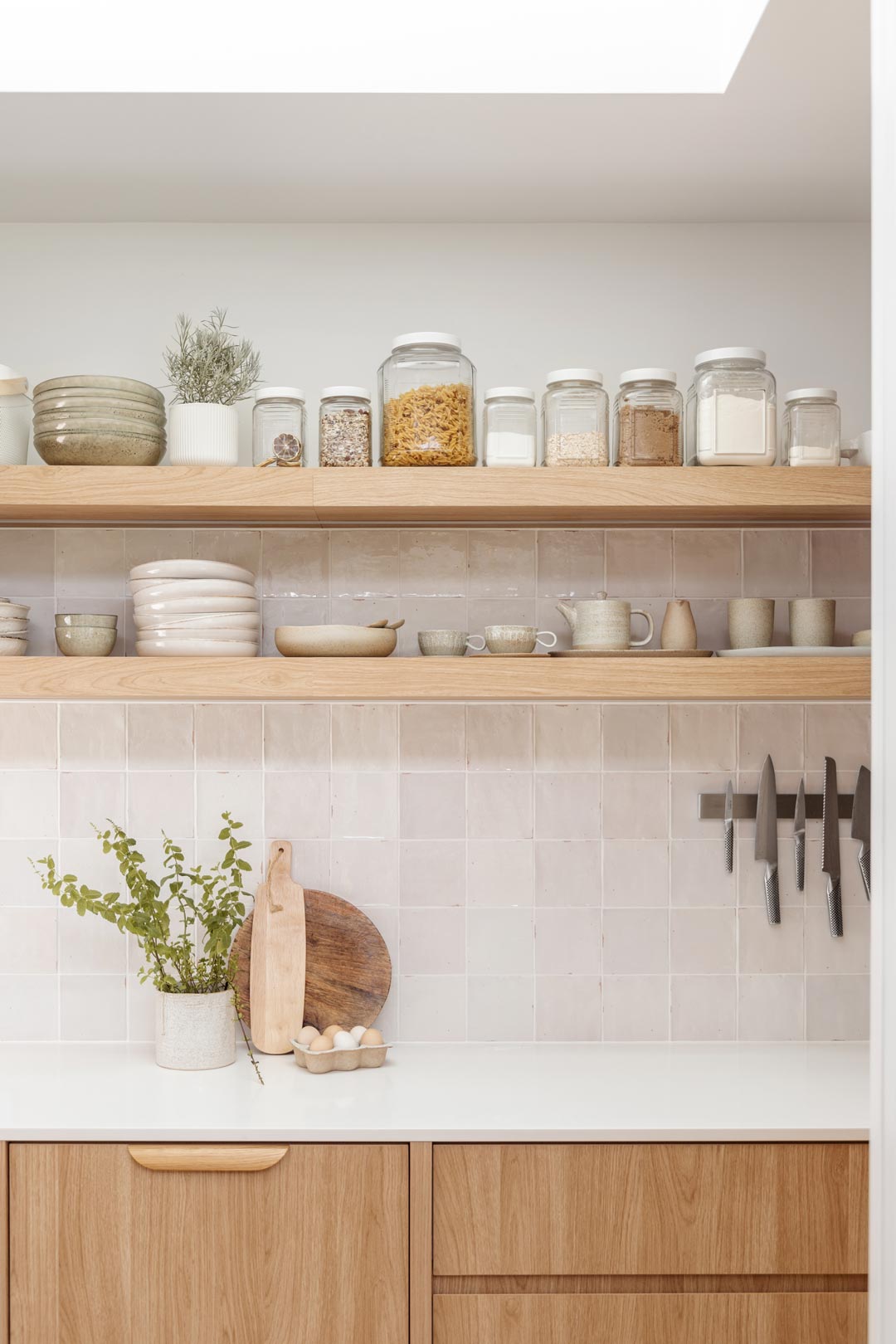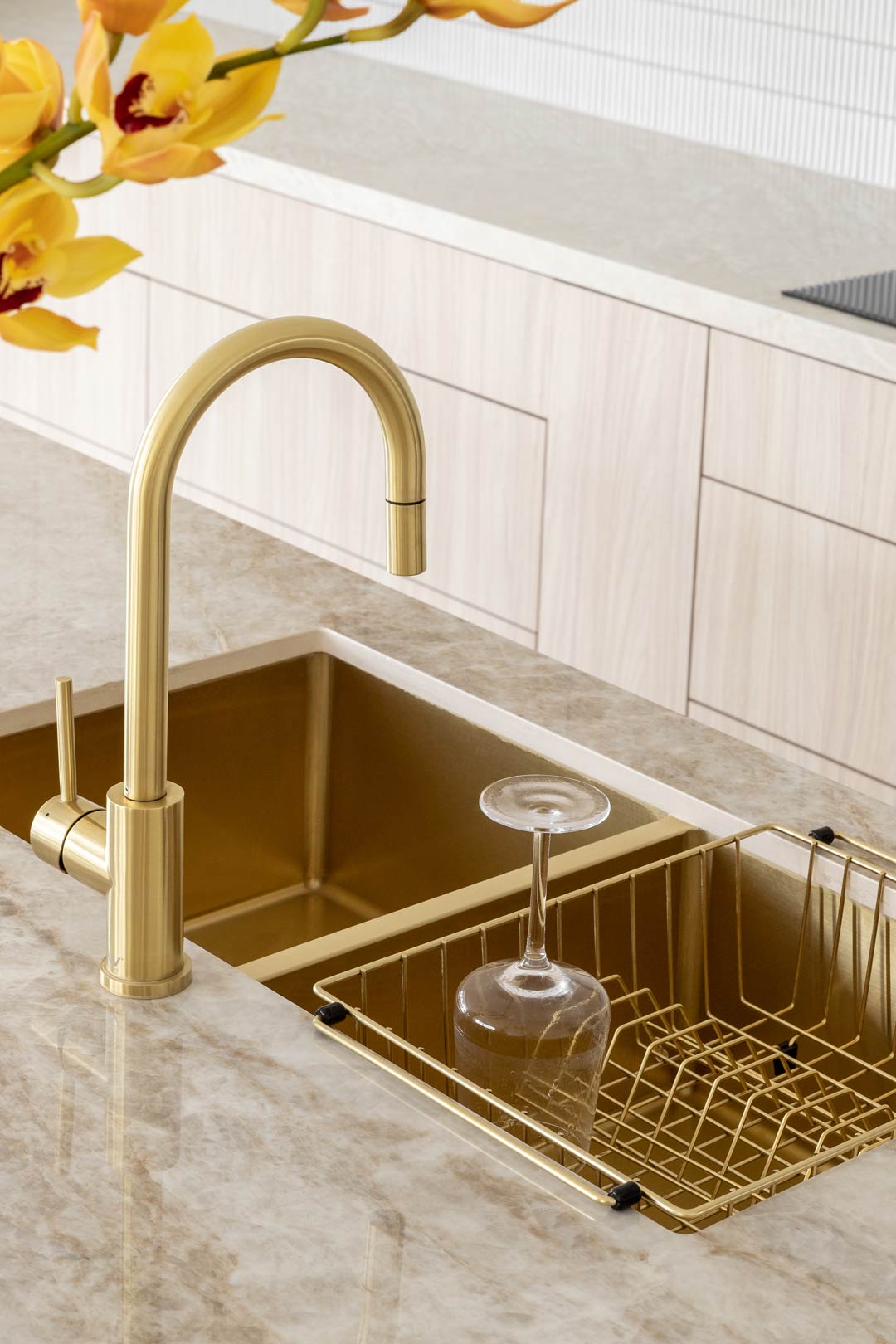Kitchen Organisation Ideas

No matter the size of your kitchen, keeping it organised and clutter-free will enhance its aesthetics and functionality. If you search endlessly for Tupperware lids or are doubling up on spices you thought were missing, it’s time to give this space some attention.
By being proactive, you can turn the hub of your home into a more efficient and appealing area. From the pantry to the fridge and everywhere in between, we explore kitchen organisation ideas and get tips from some of the interior design experts.
In the Pantry

There’s no better way to start your pantry organisation than with a stocktake of your supplies. This is the time to throw out expired items and half-open packets that have gone stale.
Transfer remaining dry foods into reusable jars or containers, such as cereals, pasta, and baking supplies. This is an eco-friendly option for those who buy in bulk, allowing you to reduce the amount of packaging in your purchases.
We recommend writing the contents and expiration date on the back of the jar. Accurately labelled and organised foods make it easier to inventory your kitchen so you know exactly what you need when shopping next.
“Utilise vertical space with adjustable shelving, allowing for easy customisation according to your needs,” adds Brad Smith, CEO and Interior Designer at Omni Home Ideas. “Consider a dedicated spice rack or a pull-out cabinet insert to make the most of deep spaces.”
In the Fridge

Fridge organisation calls for the same cleanse as your pantry — chances are you’ll find sauce bottles or condiment jars that need clearing, freeing up some much-needed space.
“Group ingredients by type and frequency of use. Use modular bins to compartmentalise different food categories, improving visibility and accessibility,” continues Brad. “Invest in ethylene gas absorbers to extend the freshness of fruits and vegetables, reducing waste.”
Silicone covers are also an excellent replacement for single-use plastic wrap when storing leftovers. They’re readily available in kitchen and homeware stores and perfect for sealing dishes, bowls, cans, and cups.
Cupboards and Drawers

Begin your kitchen cupboard organisation by decluttering your cabinets. Remove every item and assess whether you still need it. If an appliance hasn’t been used in the last twelve months, we recommend selling or donating it to someone who can make the most of it.
As a general rule, organise all your items into cupboards or drawers close to where their function is performed — for example, pots and pans should live next to the stovetop.
“Using dividers or containers when organising your cupboards can help prevent subcategories from mixing up with each other,” says self-proclaimed ‘cleaning expert’ Hester Van Hien via Ruggable.
“It will not only look tidier, but it will also make it easier to keep it tidy — not just for yourself, but also for the people you live with and friends and family who come to visit and want to help out. It’s important to have systems in place that anyone can easily understand and follow.”
It’s also helpful to consider what you place on top of your benches. Put away appliances you seldom use — if you only have toast once a fortnight, do you need the toaster sitting out at all times? We suggest tucking it in a cabinet and pulling it out when needed, encouraging a more minimalistic space.
Food containers are notorious for getting out of control. To keep lids upright and organised, try placing a couple of tension rods inside your drawer or cabinet as compartments.
Finally, a drawer organiser is a straightforward way to store silverware, measuring spoons, and other small, narrow utensils. Place the organiser in the drawer and sort your utensils into specified spots. Look for a convertible drawer organiser that allows you to change the organiser's size depending on the drawer's size.
On the Walls

Your walls offer more opportunities for kitchen storage ideas than you might realise. Large wooden knife blocks may be practical, but they cost prime real estate on your kitchen benchtop or pantry.
“Decluttering these zones is key. For instance, instead of letting knives float loosely in a drawer, consider creating a preparation zone where a Kenzo Magnetic Knife Rack offers easy access and a sleek, organised appearance,” says Sharene Tailford of Elomou Interiors.
“By thinking outside the box with kitchen organisation, you can maximise your efficiency, creating a space that is perfect for everyday living and future memories through functional and pleasing experiences.”
Adding open shelves to your walls can also offer visual and functional benefits. They allow you to display decorative dinnerware, glasses, or even plants while creating extra storage space when you need more room in your kitchen cabinets.
Around the Sink

As we can all relate, the area around the kitchen sink can quickly become chaotic, inviting dishes and cloths to accumulate easily.
A stainless steel dish rack or sink drainer are elegant alternatives to their plastic counterparts. ABI Interiors’ kitchen accessories come in various finishes to match your surrounding fixtures. They’ll keep your plates, bowls, and cups perfectly organised as they dry.
There are also several ways to maximise the space under your kitchen sink. These include adding hanging space for cloths or paper towels with a multipurpose holder.
These are just a few kitchen trends to help you create an appealing, high-performance space. We hope they’ll spark many more of your ideas, no matter how big or small your kitchen.
If you liked this blog, take some further inspiration from:
6 Ways to Maximise Space Under Your Kitchen Sink
How to Design a Timeless Kitchen



































